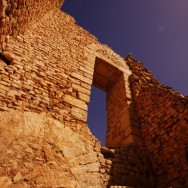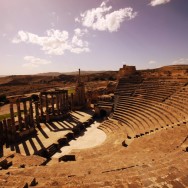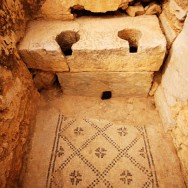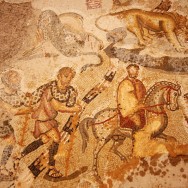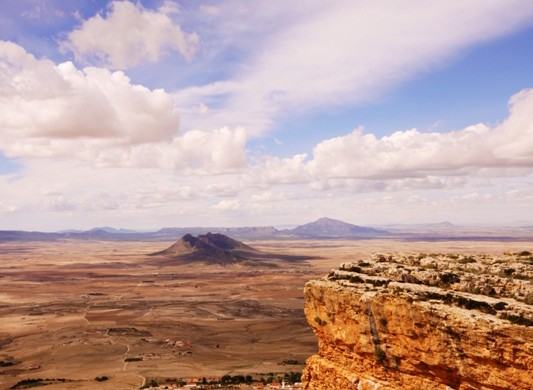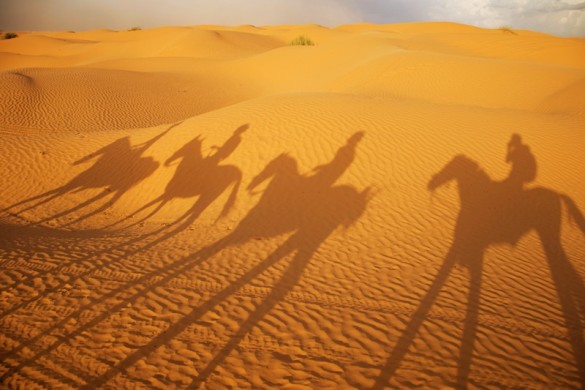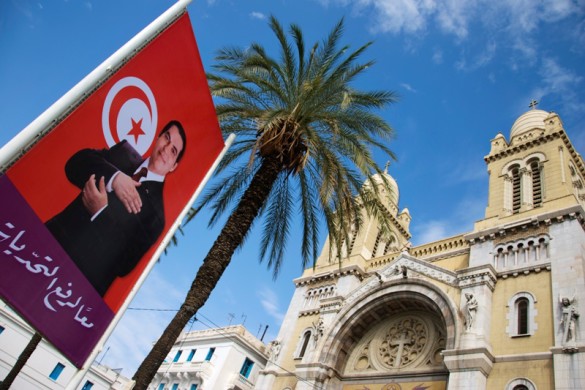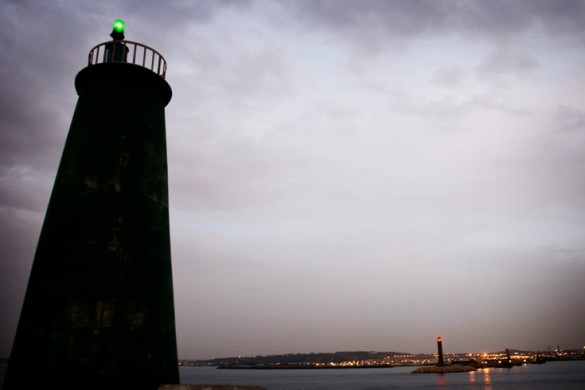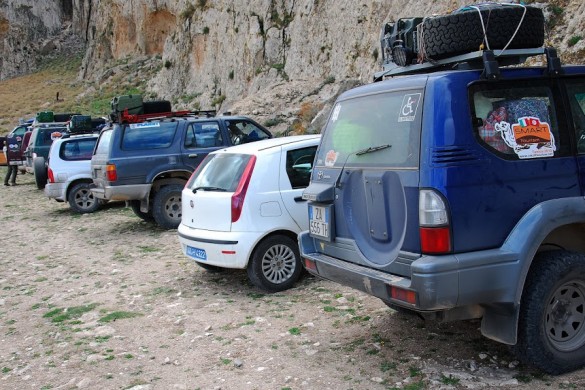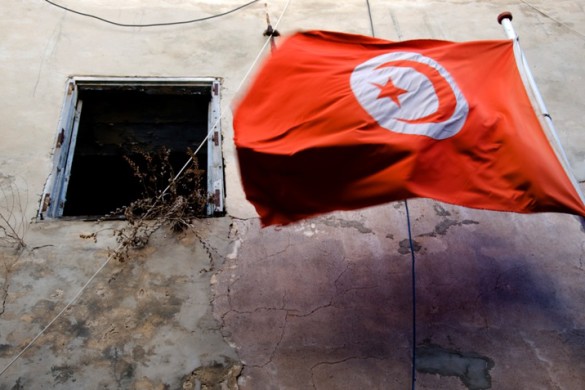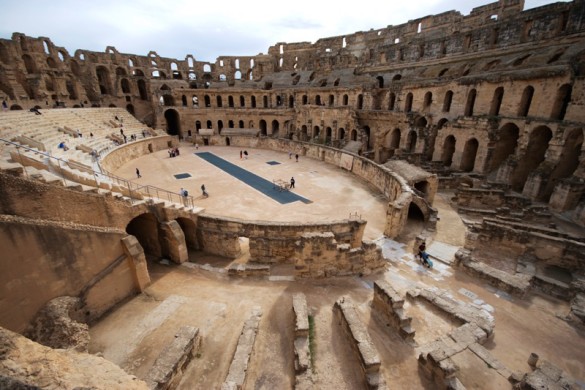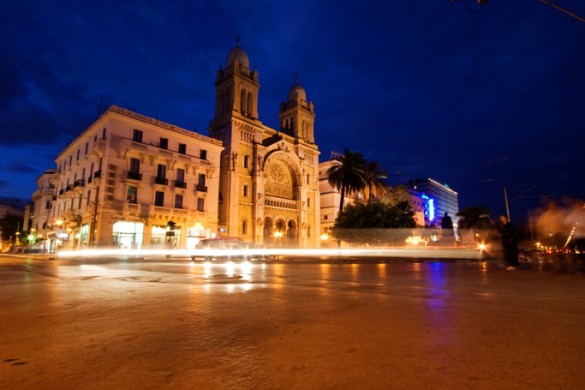After breakfast it was time to hit the road again. We continued west to the city of Tabarka. Within minutes of arriving we could tell that there wasn’t much to see or do, so our stay would be brief. Tunisia is an Islamic country, so alcohol can be hard to come by. Fortunately, we were in luck. The local Monoprix offered quite the selection, so we thought it best to stock up. Like two kids in a candy store, we filled our basket to the brim. Wine? Check. Vodka? Check. Gin? Check. Tonic? Check. Now, I know how this sounds. The truth is, we don’t drink that much. It’s just nice to know that we can enjoy the occasional glass of wine or cocktail if we so choose. It’s better to have the option, than not. At least that’s my philosophy.
With our “box of sin,” as Rich so aptly named it, tucked safely in the trunk, it was time to move on. Our next stop would be the small town of Ain Draham in the Kroumirie Mountains, where we would attempt to do some trekking. We decided to take a short detour along the way, stopping at a nice viewpoint, and then driving to the Algerian border for a quick look-see. It pays to have your own transportation.
As we strolled into Ain Draham, we were stopped by the local police – something we would experience multiple times over the next few days. These stops are pretty straightforward. They come to the window, and in a mix of French and broken English, ask where we’re from, if we speak the language, and then request to see our passports and vehicle registration. A quick glance, an exchange of smiles, and we’re on our way within minutes. I should probably give Rich some credit for perfecting the “I’m white, ignorant, and not worth your time” persona. It helps to ward off potential schemers looking for bribes.
After checking into our hotel, we went to the Royal Riyana to inquire about trekking arrangements for the following morning (according to LP, you must hire a guide, because the trails are difficult to find). The gentleman at the front desk was confused, but advised us to return the next morning at 9am to speak with another employee. We were without set plans, but remained fairly optimistic.
The rain started to pour as we made our way back to the hotel, so we opted to stay in for the night. Much to our surprise, the room had satellite TV with a few English movie channels – Yay! Our evening consisted of watching a horrible Scott Baio movie (not my fault), Crash (which we actually discussed earlier in the day – strange), part of King Kong, and drowning in a sea of gin & tonics.
Feeling slightly sluggish the next morning, we packed up our Punto and headed to the Royal Riyana once more. Unfortunately, we walked away sans guide. Determined to hike, we attempted to make our way up Jebel Biri: the highest peak in the area, or so we read. Finding our way to the top proved impossible. We followed multiple footpaths only to end up in the bushes. At least we got some exercise.
Having worked up an appetite, we opted to grab lunch at a roadside stand on our way out of town. We received a plate full of fatty mystery meat and some bread. Several days later we learned that our “mystery meat” was actually sheep. How did we figure it out? Why, the bloody carcasses lining the streets farther south, of course. Apparently sheep is very popular in these parts. We had consumed it in other dishes without even knowing it. Baaahhh!
Making good time, we visited the roman ruins of Bulla Regia, and marble quarries in Chemtou later that afternoon. Bulla Regia hosts some pretty impressive underground villa’s that are still in the process of being excavated. The town emerged in about 5th century BC, reaching its peak of prosperity in 2nd and 3rd century AD, later to be abandon during the Arab conquest. If you’re ever in the area, it’s definitely worth checking out. Chemtou on the other hand, didn’t exactly wow us. That’s not to say it should be passed up – I just think we were tired and our attention spans were dwindling by the second.
We eventually laid our heads to rest in the city of Le Kef due to its close proximity to Dougga: a UNESCO World Heritage Site, said to be the best preserved Roman city in all of Africa. The setting and site were fantastic. We hired a guide who happened to be an archaeologist, providing tours between excavations. She was a wealth of knowledge and certainly worth the extra 20 dinar. Without her, the experience would have been good, but definitely not great (it helps to know what you’re looking at). We spent the afternoon roaming around the ancient city, going camera crazy. It was there that I learned how much Rich enjoys having his picture taken. There is a term we like to use back home, but I’m afraid my parents wouldn’t approve.
We ended the day by making a trip to Hammam Mellegue for a relaxing soak, Roman style. The baths, fed by hot springs, have remained virtually unchanged for the past 1800 years. It wasn’t exactly what we were expecting, but still a worthwhile experience. Picture me, practically naked (okay, not that part), surrounded by Turkish women in a dark mud hut, sitting in 3 feet of water, bathing… scrub-a-dub-dub!



